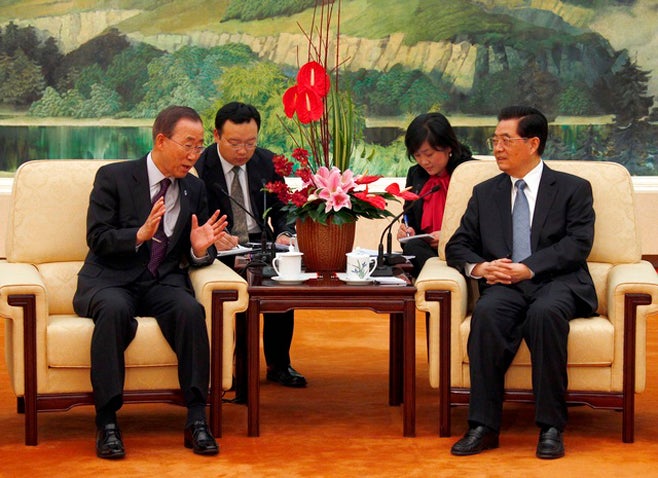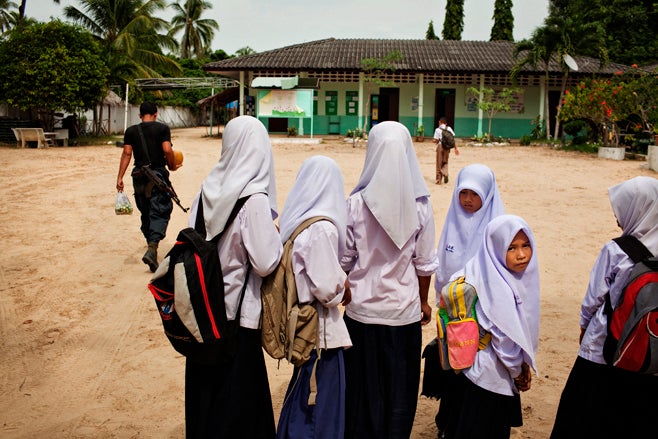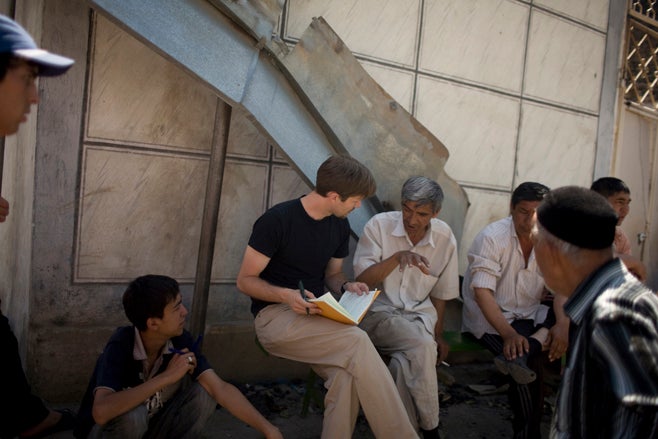Yemen's human rights situation continued to deteriorate in 2010. Amid political unrest in the south, hundreds of arbitrary arrests and the use of lethal force against peaceful demonstrators undermined advances in the rule of law. Skirmishes tested a truce in the conflict with Huthi rebels in the north, and government ministries, the army, rebels, and "tribes" in various conflict affected northern areas obstructed humanitarian assistance. Accountability for laws of war violations remained lacking. Yemen intensified counterterrorism efforts against suspected al Qaeda members in the Arabian Peninsula (AQAP), but some attacks killed and injured civilians.
Friends of Yemen, a group of states and intergovernmental organizations established in January, failed to press for an end to human rights abuses as a condition for pledging financial and technical assistance.
Terrorism and Counterterrorism
The United States increased military assistance and cooperation with Yemen's government following the failed AQAP attempt in December 2009 to blow up an airliner en route to Detroit. AQAP conducted numerous deadly attacks in 2010, particularly on state intelligence and security officials on its list of 55 Yemenis targeted for assassination.
In June four AQAP gunmen attacked a post of the Political Security Organization (one of Yemen's several intelligence agencies) in Aden, killing at least 11 intelligence officers and soldiers, and freeing several suspected militants.
In a September bus ambush in San'a AQAP killed 14 senior officers who had recently completed a US counterterrorism intelligence course. In October militants in San'a fired a rocket-propelled grenade at a car carrying five British Embassy staff members, including the deputy ambassador, injuring three. In April a suicide bomber tried unsuccessfully to kill then British Ambassador Tim Torlot.
The US government revealed it had targeted Yemeni-American preacher Anwar al-Awlaqi for assassination based on his alleged links to AQAP plots. In November a Yemeni court indicted Al-Awlaqi, who is hiding in Yemen, on terrorism-related charges and ordered his capture, dead or alive.
The US reportedly assisted Yemen in at least four airstrikes on alleged AQAP targets. One-a cruise missile attack on suspected AQAP members on December 17, 2009-resulted in at least 41 civilian deaths in the southern province of Abyan. The strike reportedly involved at least one cluster munition, a weapon that due to its indiscriminate nature poses unacceptable risk to civilians. Another US-assisted attack in central Marib province in May killed a deputy governor rather than the AQAP suspect, prompting the victim's tribesmen to attack strategic oil pipelines.
Yemen's government arrested scores of terrorism suspects on weak evidence and unlawfully detained many for weeks or months without charge, according to reputable Yemeni human rights activists. Concerns persisted that President Ali Abdullah Saleh used the counterterrorism campaign as an excuse to target members of Yemen's separatist Southern Movement and independent media.
For three weeks in August Yemeni security forces shelled suspected AQAP targets in Lawdar, a town in Abyan province that is home to separatists. Media reports said the three dozen victims included al Qaeda members and security forces, but that the attacks also damaged hundreds of homes and displaced tens of thousands of people. In September the government's three-day attack on suspected al Qaeda hideouts in Hawta, southern Shabwa province, displaced thousands more families.
Campaign against Southern Separatists
Security forces suppressed protests of the Southern Movement, establishing checkpoints on days of announced demonstrations and arresting suspected participants. On September 23, security forces arrested at least 12 Yemenis in Aden who were planning to demonstrate to draw attention to their grievances when the Friends of Yemen group of states met in New York to discuss aid to Yemen.
Deputy Interior Minister Salih al-Zawari said there were 245 southern protests in March, involving 200 acts of violence. A southern human rights report listed 13 dead, 31 wounded, and 61 arrested in separatists' clashes with government forces in May alone. In July police in Aden killed one man when they fired on a public funeral march for Ahmad Darwish, who allegedly died from torture in late June following his arrest after AQAP's attack on the Aden intelligence facility. Photographs appeared to show bruises covering Darwish's body. From May to July the army blockaded southern areas of al-Dhali', Lahj, and parts of Shabwa. Some Southern Movement activists erected road blocks and called for civil unrest, closing government offices, schools, and shops. In June the army repeatedly shelled al-Dhali' city center, leading to several civilian casualties.
Conflict in the North
On February 12, Huthi rebels and government forces in the northern Sa'da governorate agreed to a truce, ending six months of heavy fighting, which was the sixth round of violence since June 2004. In August both sides agreed to a 22-point plan to implement the truce, including releasing all prisoners. In June Yemeni NGOs presented a list of 249 persons they said the government had tried, or was trying, in connection with the Sa'da conflict, despite expectations under the truce that they would not face punishment. A further 86 remained detained without known charges. Despite the truce, skirmishes between Huthis and the army or army-backed tribal militias led to scores of civilian and fighter casualties.
As of mid-August the conflict had displaced just under 330,000 people, almost half of whom fled between August 2009 and February 2010. Only a few displaced persons went to official camps; more than 80 percent live with host families or in open spaces, schools, and mosques. Aid agencies reported struggling to reach them due to insecurity and access restrictions imposed by officials, local tribes, and rebels. By August over 16,000 displaced persons were known to have returned home.
Between November 2009 and January 2010 Saudi forces became a party to the armed conflict and prevented persons seeking refuge from crossing its border, forcing thousands back to Yemen, according to media reports.
Government forces and Huthi fighters recruited children for combat. Huthi fighters reportedly carried out summary executions and endangered civilians by firing from populated areas. Government forces reportedly conducted indiscriminate aerial bombardment in civilian-populated areas, including a crowded market in al-Talh on September 14, and a gathering of displaced persons in al-‘Adi on September 16. Neither party took steps to investigate or address possible laws-of-war violations.
Freedom of Expression
On May 22-the 20th anniversary of the unification of North and South Yemen-President Saleh declared an amnesty that freed many, but not all, detainees and prisoners arrested for peaceful expression. Political Security continued to detain peaceful Southern Movement dissidents. On August 16, intelligence forces arrested Abd al-Ilah Haidar al-Shayi', a terrorism expert and journalist for the official Saba News Agency, accusing him of being an al Qaeda spokesperson based on his interviews with the group's members.
More than 16 journalists and peaceful activists received sentences ranging from fines to 10 years in prison in 2009 and 2010, mostly for airing grievances felt by many in the south of the country. The Specialized Criminal Court in March sentenced a professor of economic geography, Husain al-‘Aqil, to three years in prison for publicly raising concerns about control of Yemen's oil wealth. After al-‘Aqil's release in the May amnesty, Aden University in September "froze" his academic duties.
On May 24 the Press and Publication Court, established in 2009 to try journalists, sentenced Sami Ghalib, chief editor of the weekly Al-Nida', and four colleagues to a suspended three-month prison term for "undermining the unity" of Yemen. The information minister banned newspapers, including Al-Watani, because of sympathetic coverage of southern protests. Some have managed to republish, others have been hauled to court or shut down.
In April Minister of Justice Ghazi al-Aghbari proposed amending the penal code by adding vague language that would criminalize "undermining established national principles." The proposals remained under parliamentary review at time of writing.
Women and Girls' Rights
Child marriages and forced marriages remain widespread, exposing young girls to domestic violence and maternal mortality, and truncating their education. Judges are not obliged to ensure girls' free consent before notarizing marriage contracts. In March a 12 or 13-year-old girl died from severe genital bleeding three days after her marriage. Amid opposition from Islamic conservatives, President Saleh has not yet signed into law a measure parliament passed in February 2009 setting the minimum age for marriage at 17.
Domestic violence and marital rape are not criminalized. A women's shelter opened in 2009 in San'a housing women fleeing from violence and former prisoners who have completed their sentences but are rejected by their families.
Despite some improvements, Yemen still has a high maternal mortality rate of 370 deaths per 100,000 live births. Approximately seven to eight women die each day from childbirth complications. More than 70 percent of women deliver at home.
Key International Actors
In August Qatar mediated between the government and Huthi rebels. The United Kingdom in January assembled the Friends of Yemen group, including key Gulf countries, the G8, and intergovernmental organizations. In March and September meetings, the group discussed financial assistance to Yemen, but failed to tie aid to ending the human rights abuses fueling Yemen's crises.
Donors contributed only 49 percent of the requested US$187 million under the United Nations 2010 Yemen Humanitarian Response Plan. Saudi Arabia, Qatar, and other Persian Gulf states provide substantial amounts of assistance to Yemen, including to tribal leaders, religious institutions, and the government. European Union states also gave humanitarian and development aid.
The US more than doubled its military assistance to Yemen to $150 million, as well as giving US$110 million in humanitarian and economic aid. The US publicly supported Yemen's unity, but urged peaceful resolution of its crises.



